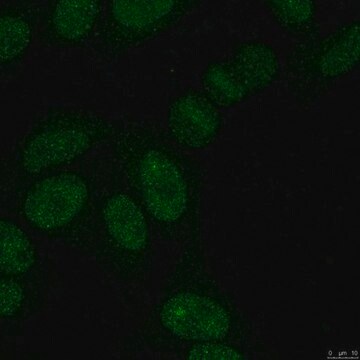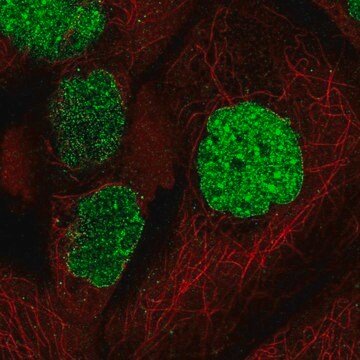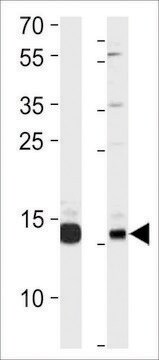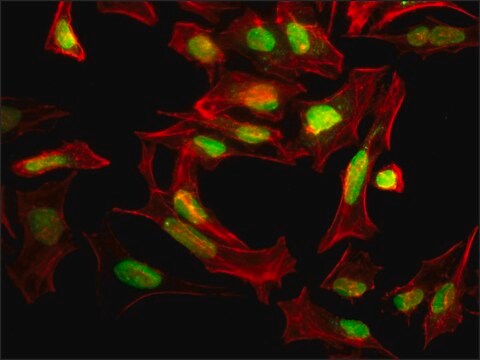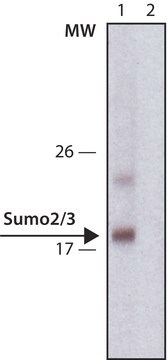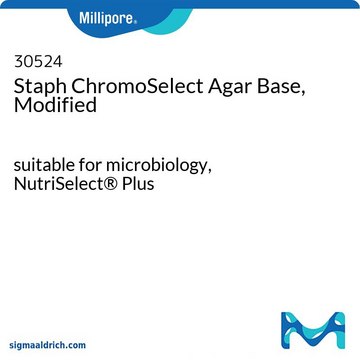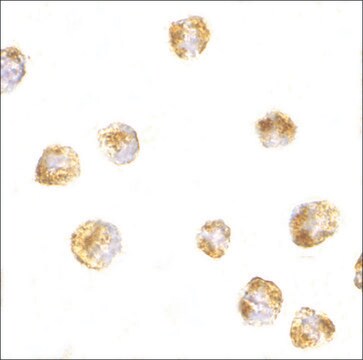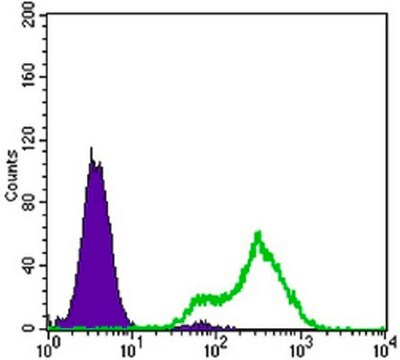07-2167
Anti-SUMO 2/3 Antibody
from rabbit, purified by affinity chromatography
Synonim(y):
SMT3 suppressor of mif two 3 homolog 2 (S. cerevisiae), Ubiquitin-like protein SMT3B, SMT3 homolog 2, SMT3 (suppressor of mif two 3, yeast) homolog 2, SMT3 suppressor of mif two 3 homolog 2 (yeast), small ubiquitin-related modifier 2, small ubiquitin-lik
About This Item
Polecane produkty
pochodzenie biologiczne
rabbit
Poziom jakości
rodzaj przeciwciała
primary antibodies
klon
polyclonal
oczyszczone przez
affinity chromatography
reaktywność gatunkowa
pig, human, mouse, rat
reaktywność gatunkowa (przewidywana na podstawie homologii)
bovine (based on 100% sequence homology), porcine (based on 100% sequence homology), rhesus macaque (based on 100% sequence homology), opossum (based on 100% sequence homology), chimpanzee (based on 100% sequence homology)
metody
immunoprecipitation (IP): suitable
western blot: suitable
numer dostępu UniProt
Warunki transportu
wet ice
docelowa modyfikacja potranslacyjna
unmodified
informacje o genach
human ... SUMO2(6613)
mouse ... Sumo2(170930)
opossum ... Sumo2(123244757)
rat ... Sumo2(690244)
Opis ogólny
Specyficzność
Immunogen
Zastosowanie
Signaling
Ubiquitin & Ubiquitin Metabolism
Immunoprecipitation Analysis: A previous was used by an independent laboratory in IP. (Li, T., et al. (2006). The Journal of Biological Chemistry. 281(47):36221-36227.)
Jakość
Western Blot Analysis: 1 µg/mL of this antibody detected SUMO 2/3 on 10 µg of HeLa nuclear extract.
Opis wartości docelowych
Postać fizyczna
Przechowywanie i stabilność
Komentarz do analizy
HeLa nuclear extract
Inne uwagi
Oświadczenie o zrzeczeniu się odpowiedzialności
Nie możesz znaleźć właściwego produktu?
Wypróbuj nasz Narzędzie selektora produktów.
Kod klasy składowania
12 - Non Combustible Liquids
Klasa zagrożenia wodnego (WGK)
WGK 1
Temperatura zapłonu (°F)
Not applicable
Temperatura zapłonu (°C)
Not applicable
Certyfikaty analizy (CoA)
Poszukaj Certyfikaty analizy (CoA), wpisując numer partii/serii produktów. Numery serii i partii można znaleźć na etykiecie produktu po słowach „seria” lub „partia”.
Masz już ten produkt?
Dokumenty związane z niedawno zakupionymi produktami zostały zamieszczone w Bibliotece dokumentów.
Nasz zespół naukowców ma doświadczenie we wszystkich obszarach badań, w tym w naukach przyrodniczych, materiałoznawstwie, syntezie chemicznej, chromatografii, analityce i wielu innych dziedzinach.
Skontaktuj się z zespołem ds. pomocy technicznej